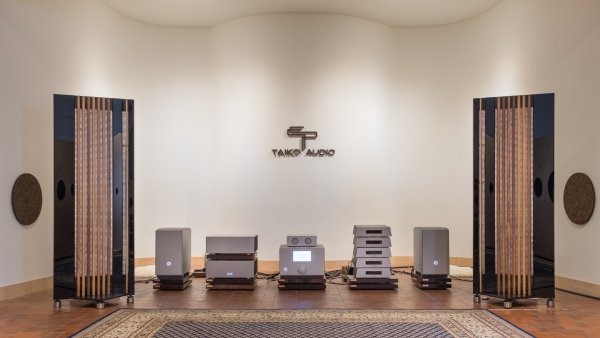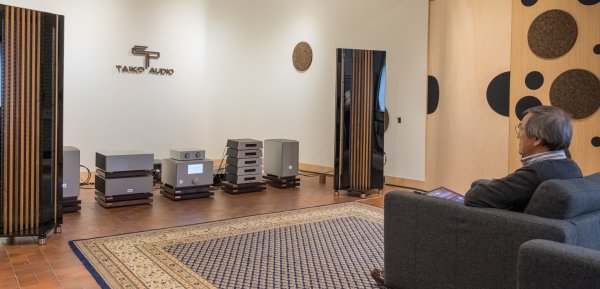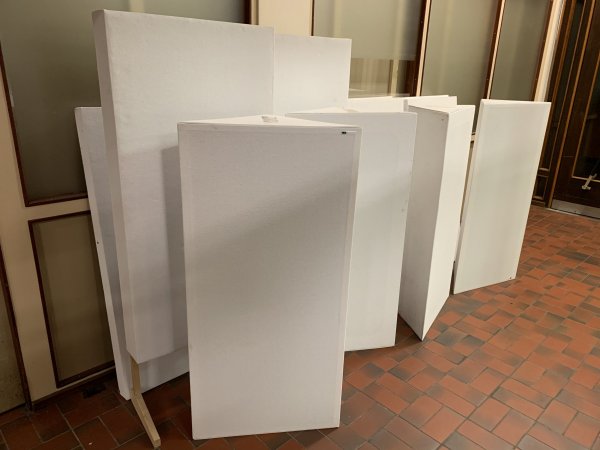I am excitedly writing this post as a Maggie fan from more than 20 years ago, a hobbyist who organised a group buy for Hovland caps from Alex Crespi and Alphacore copper foil inductors to build 17 sets of external crossovers DIY kits for other Maggie 1.6's owner's.
There was gorgeous tonality for female vocals but the big negatives were the large size of the singers mouths and lack of bass. I then moved on to stand mount monitors for the pin point imaging they could deliver, and tried my best to integrate them with a subwoofer.
Now the Botticelli X's have taken center stage on my audiophile journey. They exhibit such a well defined soundstage, that I had come up with a new term in my audio vocabulary "Spatial Resolution". The standard description of depth and layering does not adequately describe the sonic landscape of instruments and singers which is painted by the Botticelli X.
Whenever I audition a new piece of gear, the first track I always play is Miles Davis Time after Time, the live version. A somewhat challenged recording with sound system hum at the venue and other problems. As I listened to Miles playing, the beautiful tonality of his trumpet made me search for words to describe the experience. What came to mind was "harmonic canvass" and how the system presented richness, texture and above all sheer beauty of Miles' trumpet performance. The decays had a clarity and naturalness that had me ooing and arrghing.
I have always suspected from the soundstage spatial cues that the venue space was pretty large. The spatial resolution of the Botticellis convinced me more than ever that the venue was very large. A quick Google search listed the concert venue as a 2,500 seat cinema / theatre in Milan, confirming the spatial resolution was indeed delivering an accurate depiction of hall size
Then came Eva Cassidy's Fields of Gold vocal check. The texture of the voice, the harmonic tones of the guitar breathtakingly beautiful. The thought that I could not get out of my mind, was "Beam me up Scotty", I have been teleported through time and space and inserted into the recording venue, up front and center.
Glen Gould, Goldberg Variations, BWV 988 - a great performance but a so so, somewhat muffled recording. Good tube amps driving horn speakers can really bring this recording to life. In my experience very good solid state amps driving conventional speakers often struggle to deliver the attack needed to make the performance exciting. Here the Botticelli's were delivering attack at a level competitive with good horn systems I have heard.
The tonality of Glen Gould's piano reminded me of a day about 30 years ago when a Steinway trained piano tuner came to my previous home in New York to tune a very consumer / hobby grade baby grand piano. After tuner was done, the piano sounded like a Steinway for the next six months. The Botticelli to my ear is able to carry out a similar harmonic enhancement and sonic alchemy.
Large orchestral pieces are truly an experience to behold. The separation of the instruments, you think that you are hearing and seeing the movement of the bows over the strings. No instrument is attached to the speakers, the level of distortion is that low. Each section of the orchestra is communicating its distinct musical motif with emotion, drive and clarity to their fellow players, PRAT in spades !
For bass drum depiction, my go to track is Jamie Cullum's "If I rule the World" When I heard the tightness and texture, I called out to the others in the room, "Absolutely no subwoofer needed"
For any audiophile interested in planars, the Botticelli X is a must audition
My personal thanks to Daniele for creating a planar that is so musically satisfying that it has propelled my listening enjoyment to levels beyond my expectations
Continuing Edward's report, I would like to share my feelings about the Botticellis too after an extensive 2-day-audition in Hengelo:
I gladly followed Emiles invitation to hear his newest toys along with Edward. This has been my second visit to Taiko and boy did his system evolve from the former SGM2015/T+A/VTL/KEF Blade combo I heard roughly 3 years ago. My first encounter with these marvels was at Hifi Deluxe last year, where I certainly liked them but didn't fall in love with them - that has changed now.
The Botticellis are the most transparent, resolving and revealing speakers I have encountered so far. We started with some HD Tape Transfer recordings I brought along which I know quite well from home - but what I heard was so far ahead that at first I couldn't believe my ears. The texture of the saxes on a Mulligan/Desmond recording was breathtaking, the intensity of the choir of a Carmina Burana recording was spooky. These HDTT recordings mostly sound fantastic, although at home my attention is sometimes focused on the tape noise/hiss. In Emile's system the noise is of course also displayed, but it does not distract from the music in any way. Quite the contrary, it gave the recordings a vintage atmosphere that was kind of beneficial instead of distracting.
The system was able to reproduce depth in a way I thought was not possible, on Antiphone Blues I was seeing the organ 30 meters behind the sax player and the space of the venue was clearly laid bare - proof that no sub is needed with these as Edward pointed out.
The individual voices of the choir on Joni Mitchel's Sire of Sorrow (live) were clearly audible with a reach out and touch effect to them.
The proof that a system is an over achiever
for me is always classical. I do not listen to classical music very often, I can appreciate it though when reproduced well. I can count the occasions on one hand where classical music was played and I actually felt the urge to play more. Those occasions were a full MBL reference system, a full Ypsilon system, a Devore O/Reference and the LV Vox Olympian. The Botticellis with the Audionet combo is now leading that pack and gets my very seldom given classical approved stamp.
I was amazed when we did a comparison of hard drive vs Tidal vs Quobuz on the Extreme. The Botticellis (and of course the downstream components of Extreme, TD12 and Audionet) were able to show the differences clearly, although as the evening moved on, the differences became notable smaller and smaller - an interesting observation. As the second day came to an end though we were so in the zone, that we didn't care what the source material was and just enjoyed everything big time - that for me is the real essence what a great system should be able to deliver.
Are the Botticellis for everyone? No, they do have a certain aesthetic which conventional cones do not have which may be not for everybody. They do not have the concentrated and focused energy of horns, but they are close. Nor do they have the super-pinpoint and razor sharp imaging of a small 2-way, but they come very close (In fact I was especially surprised at the rendering of height differences of sound events relative to each other, something I didn't expect).
What they do though is complete transparency and control at any volume. They can show very high color intensity when it is on the recording, they completely disappear and have this special boxless sound to them that makes you think of a window being opened completely.
In summary, Emiles system is one of the top 3 I have heard so far and in certain areas the best. My hats off to Daniele for building an incredible speaker, every owner can be sure to have an absolute worldclass transducer at home.
Christoph




















